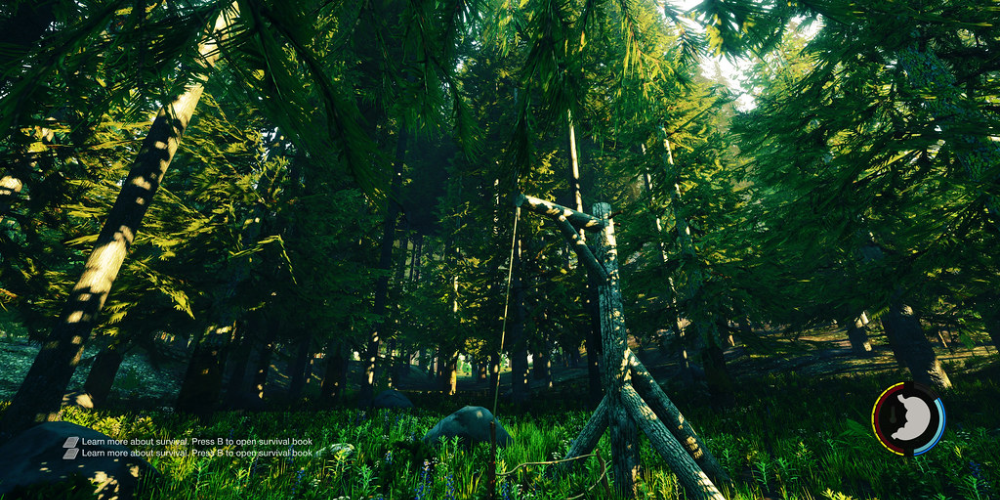The Beginner's Guide to Surviving in The Forest: Tips and Tricks
- 2024-03-09 08:35

Embarking on an adventure into the wilderness can be a thrilling experience. The forest offers a unique blend of beauty, serenity, and the raw challenge of nature. Yet, for beginners, navigating the complexities of survival in the forest can seem daunting. Whether you're planning a short hiking trip, a camping expedition, or preparing for unforeseen emergencies, having a solid understanding of basic survival skills is indispensable. This guide will explore essential tips and tricks aimed at helping you to not only survive but thrive in the forest.
Understanding Your Environment
Before setting foot into the forest, familiarize yourself with the area. Research the local wildlife, plant life, weather conditions, and topography. Knowledge about poisonous plants, edible berries, or nuts could prove crucial. Understanding potential weather changes can help you prepare appropriate gear. Additionally, knowing the terrain helps in navigation and in identifying potential hazards.
Creating Shelter
The first priority in any survival situation is finding or creating shelter. A good one can protect you from the elements and lower the risk of hypothermia. When looking for a sheltered spot, choose a site that's dry, flat, and away from any dead trees that could fall. If you can't find a natural shelter like a cave, learn how to construct a lean-to or a debris hut using branches and leaves. Ensure your shelter is small enough to retain body heat but large enough to accommodate you comfortably.
Securing Water

Water is a critical survival necessity, yet in the forest, not all water is safe to drink. Moving water in streams and rivers is generally cleaner than stagnant water, but it's always safer to purify water by boiling, using water purification tablets, or a filtration system. Always carry a means to purify water and know how to collect rainwater or dew in case of emergencies.
Finding Food
While you can survive several weeks without food, maintaining your energy levels is vital, especially in survival situations. Knowledge of edible plants and insects can be a lifesaver. Avoid plants with milky sap, umbrella-shaped flowers, or three-leaved growth patterns, as these can be indicators of poison. If you're prepared with a fishing line or know how to set small traps, fish and small game can supplement your diet. Always cook any wild game or fish thoroughly to avoid diseases.
Signaling for Help
In situations where you need to be rescued, knowing how to signal for help is paramount. Three of anything (blasts of a whistle, signal fires, or even piles of rocks) is a universally recognized distress signal. Keep a whistle, a mirror, or any reflective object with you to create light signals. In clear areas, you can also create large ground symbols that air rescue teams can spot.
Maintaining a Healthy Mental Attitude
Survival is not just about physical preparedness but also mental resilience. Panic can cloud judgment and lead to mistakes. Strive to maintain a focus on tasks that improve your situation. Setting small, achievable goals can boost your morale and keep you focused. Remember, the human spirit is incredibly resilient; trust in your ability to endure and overcome.
Navigating Your Way

Getting lost is a common fear in the wilderness, making navigation skills essential. Always carry a detailed map of the area. Learning how to read natural signs, such as the position of the sun, moon, and stars, can also aid in finding your way. If you're truly lost, it's often best to stay put, making yourself easier to locate by rescuers, especially if you've informed someone of your travel plans and expected return.
Preparedness and Pack Essentials
The right gear can make a significant difference in your survival prospects. While what you bring will vary depending on the length and nature of your trip, there are essentials everyone should carry:
- Water purification system: Be it tablets, filters, or boiling equipment.
- Shelter materials: A lightweight tent, tarp, or emergency space blanket.
- Fire-starting tools: Waterproof matches, lighters, and fire starters.
- Navigation aids: A compass and detailed map of the area.
- First-aid kit: With items to treat cuts, burns, splints, and any personal medications.
- Signal devices: A whistle and mirror for signaling help.
- Food: High-energy, non-perishable food items like nuts, bars, and dried fruits.
Ensure your pack is as light as possible while containing all your essentials. Overpacking can lead to fatigue and reduce your mobility.
Handling Wildlife
Encounters with wildlife, while often exhilarating, can pose a significant risk. Make noise while moving to avoid surprising animals. Learn how to store food properly, using a bear bag or canister to prevent attracting wildlife to your camp. If you encounter a large animal, do not run. Instead, make yourself look as big as possible and back away slowly, avoiding direct eye contact.
Staying Healthy and Hygienic

Keeping clean is crucial, not just for comfort but to avoid infections. Wash hands regularly, and if water is scarce, use hand sanitizer. Dig a small hole away from water sources for nature calls and cover it afterward to prevent attracting animals or contaminating water. Lastly, take care of your feet. Keep them dry and warm, and treat any blisters or cuts immediately to prevent infections.
Environmental Awareness and Leave No Trace
Survival in the forest isn't solely about ensuring your own safety but also about preserving the natural environment. Practice the principles by minimizing your impact. Take out everything you bring in, and be careful with fires, ensuring they're fully extinguished before leaving. By respecting the natural environment, you help ensure its preservation for future adventurers.
Conclusion
Surviving and thriving in the forest requires a blend of knowledge, preparation, and the right attitude. By familiarizing yourself with your environment, knowing how to secure shelter, water, and food, and understanding the principles of navigation and rescue signaling, you're well on your way to a safe and rewarding forest adventure. Remember, the key to survival is not to panic but to think clearly, make informed decisions, and always be prepared for the unexpected. Embrace the beauty and challenge of the forest with confidence and respect, and you'll find the experience immensely fulfilling.
Adventure awaits in the heart of the wilderness. With these tips and tricks in your survival toolkit, you're ready to embark on your forest journey, prepared for whatever nature throws your way. Happy trails!





